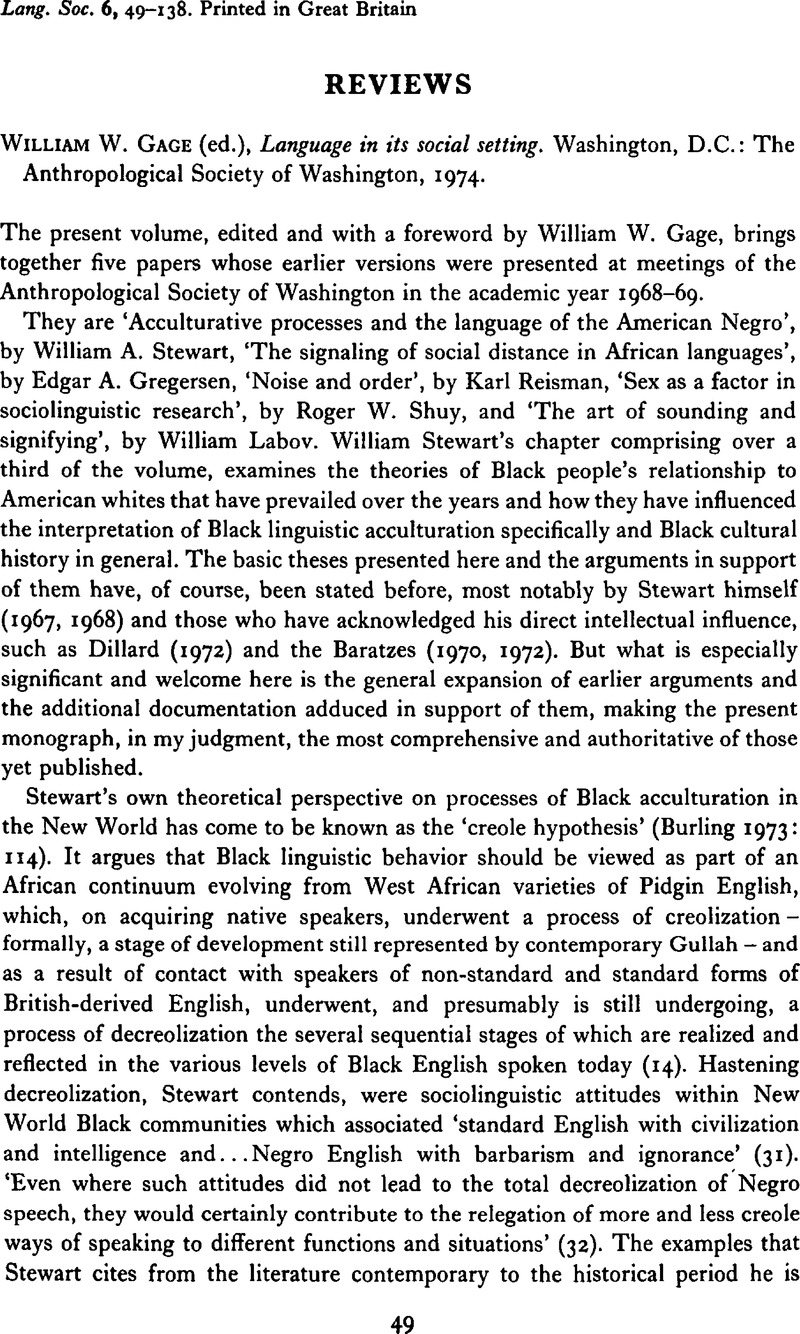Crossref Citations
This article has been cited by the following publications. This list is generated based on data provided by Crossref.
HYMES, DELL H.
1979.
Language, Children and Society.
p.
1.
Kochman, Thomas
1983.
The boundary between play and nonplay in black verbal dueling.
Language in Society,
Vol. 12,
Issue. 3,
p.
329.



